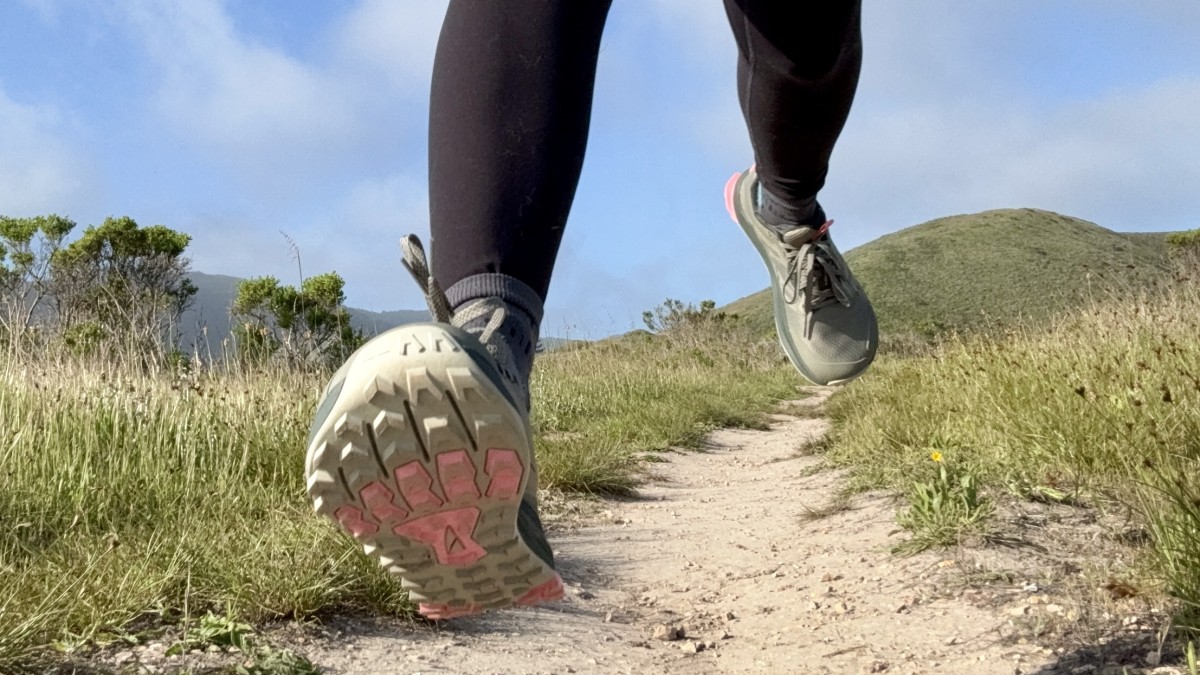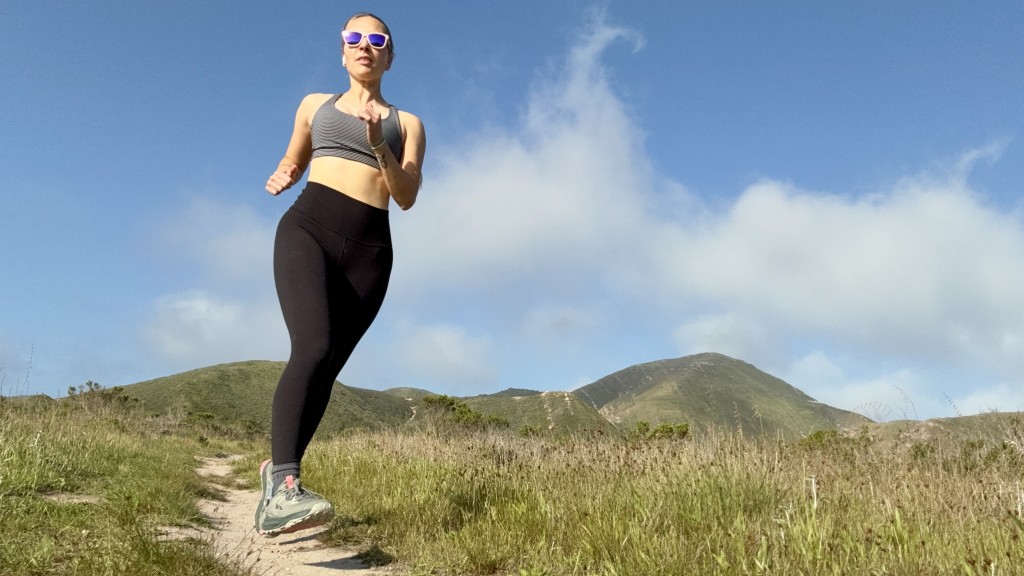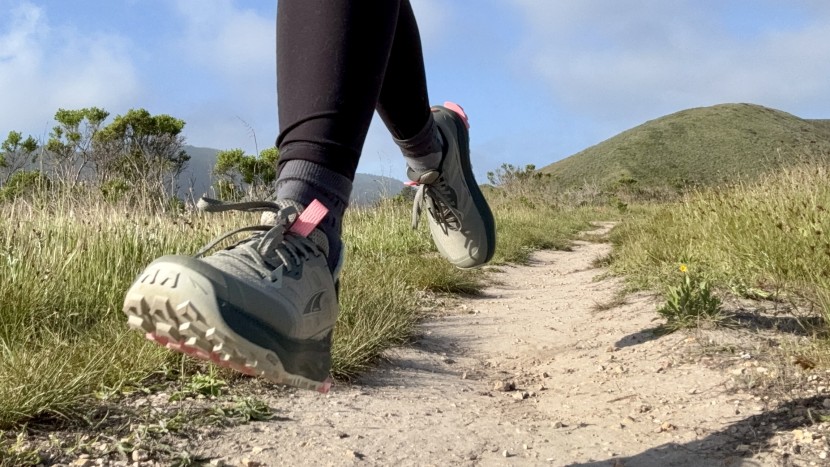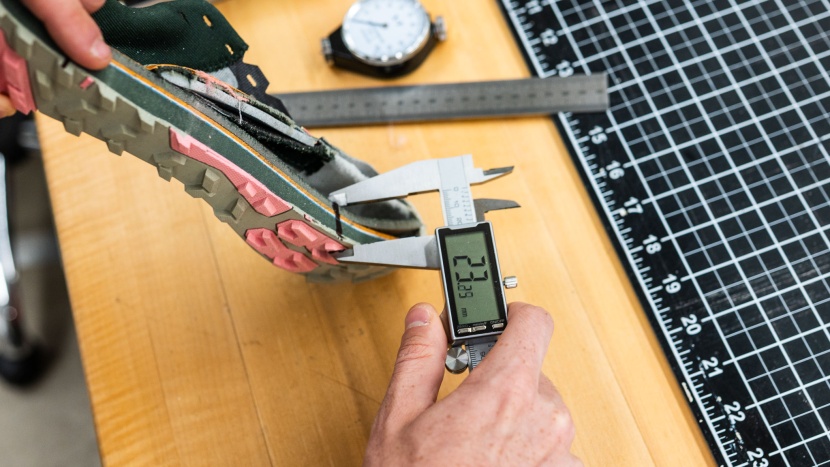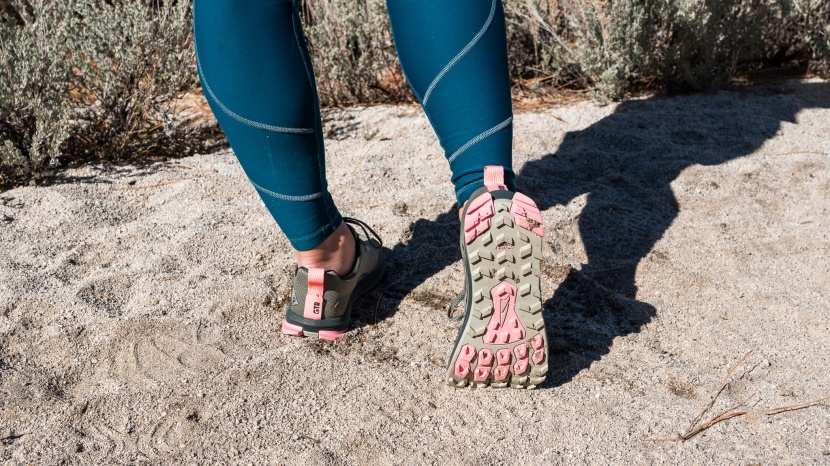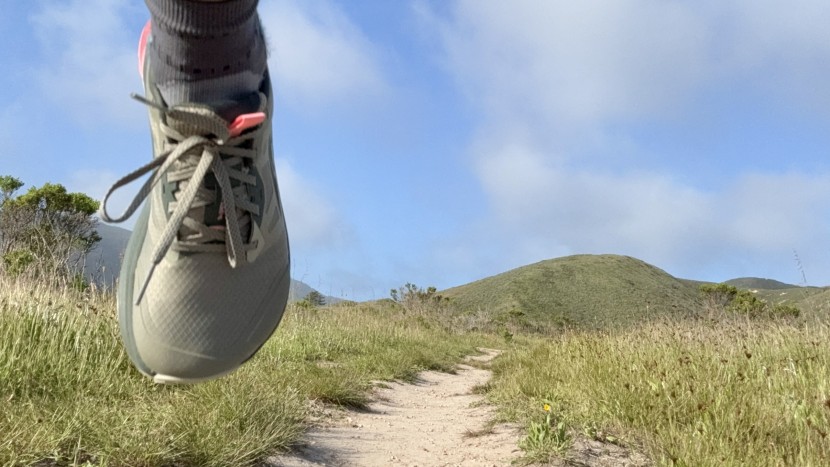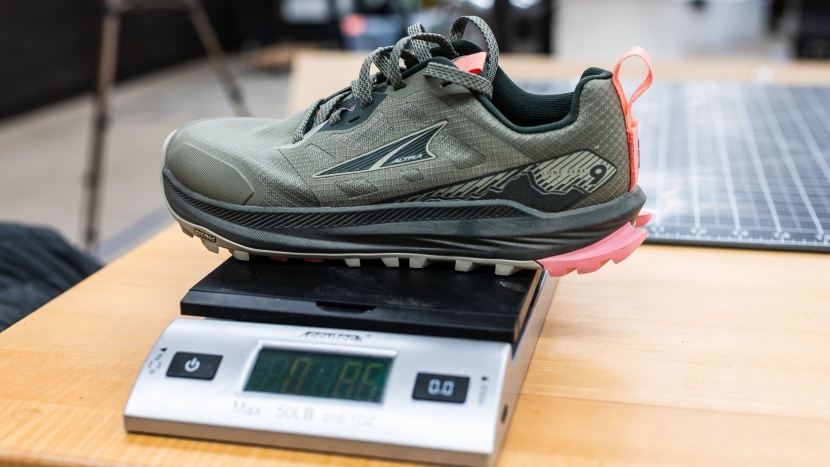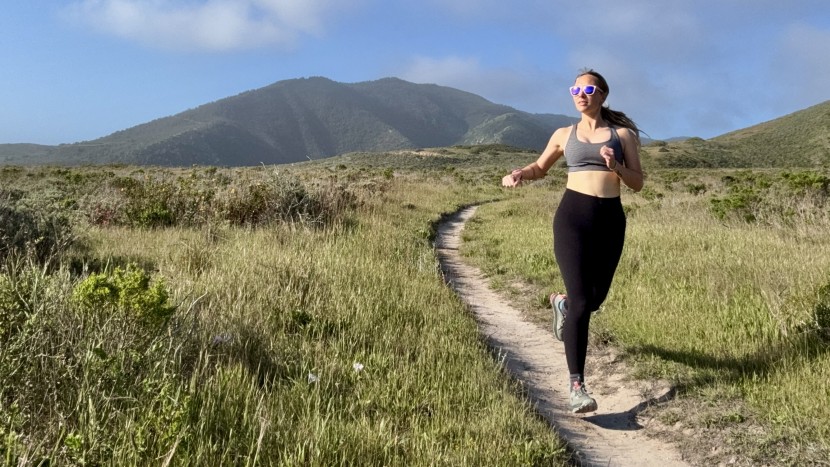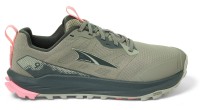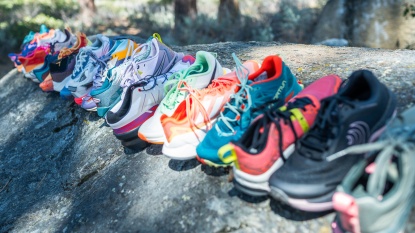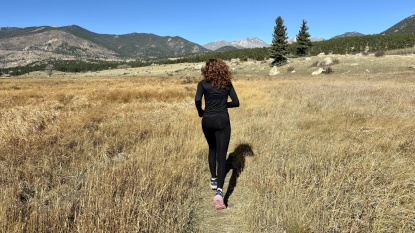Altra Lone Peak 9 - Women's Review

Our Verdict
Our Analysis and Test Results
Though the Altra Lone Peak 9 is listed as a zero-drop shoe, our in-house testing team measured a 1 mm total drop. This is still quite low in the world of running, allowing the heel to ride nearly in line with the forefoot. At 8.60 ounces, the updated Lone Peak is heavier than its predecessor, adding bulk to its overall profile.
Comfort and Fit
In the words of the Spice Girls, “Too much of something is bad enough.” That refrain echoed in our heads as we tried to make peace with the Lone Peak 9's monster toe box. We've long appreciated Altra's roomy forefoot for daily miles, but this version overdid it. The excessive width compromises midfoot lock, forcing us to cinch the laces like a Victorian woman tightening her corset just to feel stable. The toe box isn't the only letdown. The updated midsole feels dull and lacks the comfort bounce we appreciate in our shoes. Altra's new ripstop upper is durable and smooth, thanks to its no-sew overlays, but it runs hot and sacrifices breathability for debris protection.
That said, not everything missed the mark when it comes to this shoe. In fact, the Lone Peak 9 still tops our list of low-drop trail shoes we recommend. The heel collar is low-profile yet plush, delivering solid comfort even if the rest of the upper lacks cohesion. Despite my aggressive tie-downs, the padded, dual-gusseted tongue also gets a thumbs-up, preventing lace bite. Overall, the Lone Peak 9 is a firm, roomy trail shoe that favors ground feel and toe splay over responsiveness and ride. Runners who are dedicated to a low drop shoe should give the Lone Peak a spin.
Stability
One of the benefits of low-drop, low-riding shoes is that they tend to be super stable, and the new Lone Peak is no exception. There isn't a ton of midsole or arch support to be found here, but the rest of the elements come together nicely to create a stable ride.
Although the extra-wide toe box may seem excessive, it certainly provides ample space for toes to splay. Overall, the Lone Peak 9 offers a comfortably wide base of support that makes for a stable ride across varying terrain types.
Traction
I tested the standard version of the Lone Peak 9. This version features the tried-and-true MaxTrac outsole, complete with multidirectional lugs of varying shapes and sizes. The Vibram outsole version of the shoe seems to be the standard European model, but it is available to customers in the United States.
The MaxTrac rubber outsole closely resembles that of previous versions, featuring U-shaped and chevron-shaped lugs of varying sizes. Sharp edges wrap 360 degrees around the outsole, providing reliable underfoot security, while the rear fin-like lugs add driving power and control—a feature carried over from past models. Though effective, the low and firm ride makes this setup less ideal for heel strikers.
The 3.7 mm lugs, combined with thoughtful spacing, deliver strong traction across a wide range of terrain. Much of this grip comes from the Lone Peak's 24 mm heel stack, which keeps runners close to the ground and enhances trail sensitivity. Without a true rock plate, trail features are easy to feel. While past versions softened this with flexible midsoles, the updated, stiffer design offers a firmer, less forgiving ride than longtime fans may expect. The traction of this shoe comes together when you consider how the outsole and the sensitivity work together. Even with a partial rock plate, runners can feel the nuances of the ground beneath them, finding confidence with each footfall.
Foot Protection
The total heel stack of the Lone Peak 9 is 24 mm, which is 4 mm higher than the Lone Peak 8. The additional rigidity offers some protection underfoot without sacrificing comfort.
The new Lone Peak features a StoneGuard insert, not a full rock plate, but a structure that offers decent underfoot protection. The toe bumper is solid, shielding toes from trail hazards, and the ripstop upper blocks debris, even if it sacrifices breathability. As usual, the rear gaiter trap is secure and gaiter-ready. Overall, foot protection remains a strong point, and that's something I'm glad to report.
Weight
This iteration of the Altra Lone Peak is actually heavier than the last version — 8.60 ounces vs. 8.14 ounces.
Though a few updates have been made, the additional weight seems rather needless. The whole design of this version seems to be less balanced, emphasizing its weight underfoot. While an extra half-an-ounce or so may not seem like much, the bulk and dull midsole culminate to create a heavy, blah-feeling trail experience.
Should You Buy the Altra Lone Peak 9?
In the past, we've loved the Lone Peak as a true do-it-all adventure shoe. Its generous toe box has carried us through countless comfortable miles across a range of activities, from backpacking, biking, running, and hiking, all with that signature comfort-first feel. But this latest version finds itself falling behind. The Lone Peak struggles to keep up with higher-performing, low-drop options now on the market. If you're after an ultra-wide toe box and can live with limited breathability and a somewhat uninspired midsole, this shoe may still deliver what you need. For some trail runners, it might even be the holy grail. For us, though, this iteration lands squarely in the middle of the pack.
What Other Trail Running Shoes Should You Consider?
Topo has largely overtaken Altra in terms of forefoot comfort. The Topo Ultraventure 4 is a dependable daily trail shoe with a 7 mm drop, 34 mm stack, and a more agile ride. While pricey, the Hoka Tecton X 3 offers a 3 mm drop, making its differential one of the closest to the Lone Peak in our lineup. Dedicated zero-to-low drop trail shoe fans might find that Altra-made shoes suit their desires most effectively.
| Awards | Best Low-Drop Shoe |
|---|---|
| Price | $145 List Check Price at Backcountry |
Overall Score  |
|
| Star Rating | |
| Bottom Line | Known for its roomy fit and minimal drop, this trail runner still delivers solid protection and grip, but now feels bulkier underfoot than previous versions |
| Pros | Spacious, strong traction, Vibram option available, good sensitivity |
| Cons | Toe box is massive, heavy, not the best updates for a mainstay shoe |
| Rating Categories | Altra Lone Peak 9 |
| Comfort and Fit (40%) | |
| Stability (25%) | |
| Traction (15%) | |
| Foot Protection (15%) | |
| Weight (5%) | |
| Specifications | Altra Lone Peak 9 |
| Measured Heel Stack Height | 24 mm |
| Measured Heel-to-Toe Drop | 1 mm |
| Rock Plate | StoneGuard plate |
| Measured Lug Depth | 3.7 mm |
| Measured Weight | 8.60 oz |
| Upper | RPET ripstop mesh |
| Midsole | Altra EGO |
| Outsole | MaxTrac |
| Sizes Available | 5.5 - 12, US regular and wide |
| Heel Tab Type | Finger loop |
| Claimed Heel-to-Toe Drop | 0 mm |


